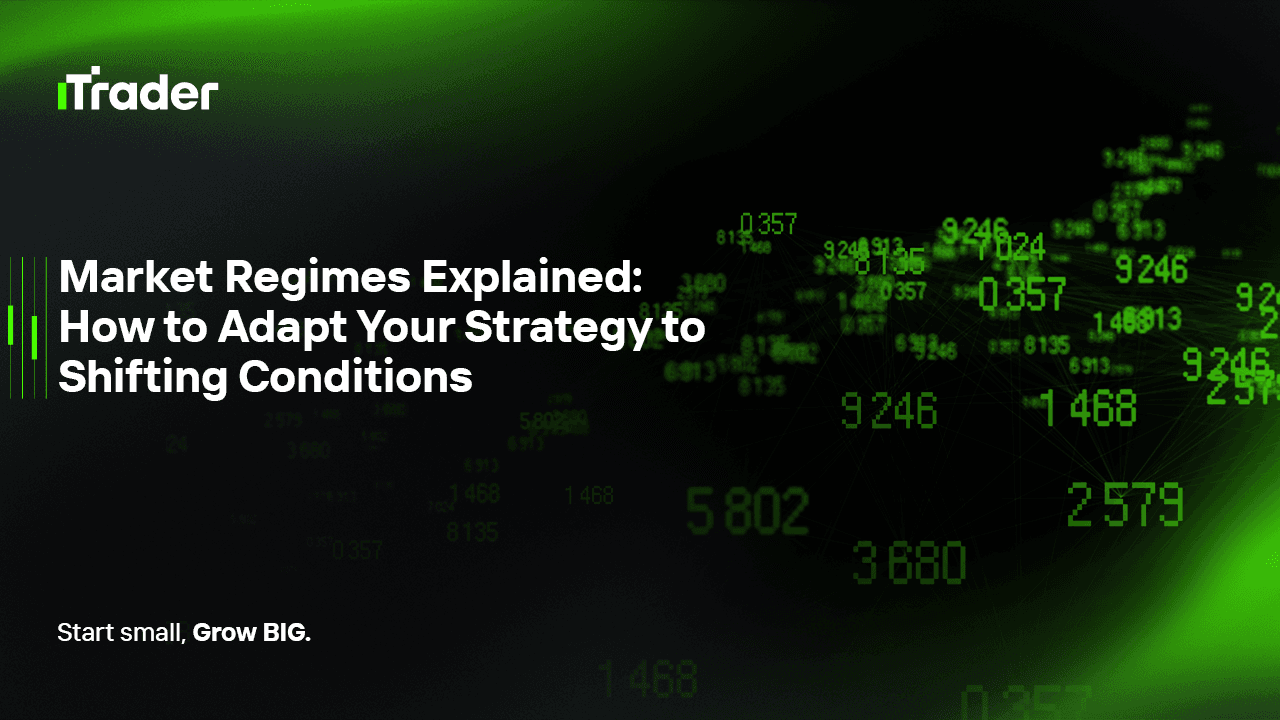2025-09-29
In the Forex market, stable and predictable environments are rare. Exchange rates can fluctuate sharply over short periods, while at other times, they may stagnate without any clear direction. In some phases, macroeconomic factors dominate price action; in others, technical dynamics take the lead. All of this directly affects the performance of trading strategies: what works well in one environment may underperform or even fail in another.

For prop traders, understanding market regimes and adjusting strategies accordingly is not merely a question of profit maximization. It’s a critical factor in passing evaluations, managing drawdowns, and securing funding.
This blog explores what market regimes are, how to identify them, how to adjust strategies when conditions shift, and why this adaptive ability is essential in a prop trading environment.
A market regime refers to the dominant structural and behavioral characteristics of the market over a specific period. Each trading strategy tends to perform best under a particular set of conditions. When the regime changes, performance deterioration is common if the strategy is not adapted accordingly.
Market regimes can be categorized in various ways, but the most common classifications are based on four main dimensions:
Identifying the prevailing regime provides the foundation for deciding which strategies to deploy, how to size positions, and when to stand aside.
Market regimes should not be identified by intuition alone. Using objective metrics allows traders to systematically classify conditions and adjust accordingly. The following are commonly used tools.
Rising volatility often calls for smaller position sizing or wider stop placement to avoid unnecessary whipsaws.
Most strategies are overfitted to a particular environment during backtesting. Parameter settings that work well in one regime often break down when conditions shift. This leads to several common issues:
When regimes shift, traders should not blindly abandon their systems. Instead, they should apply structured adaptation methods, including rule-based adjustments, volatility-sensitive sizing, filtering, or switching between strategy clusters.
This involves setting clear, objective rules for determining the current regime and activating specific strategies accordingly. For example:
This approach provides a systematic way to align strategies with prevailing conditions.
Adjusting position size according to volatility is one of the most effective ways to control drawdowns. By linking position size to ATR or historical volatility, traders can reduce risk during turbulent periods and scale up during stable phases.
This involves running multiple strategies in parallel and dynamically allocating capital based on regime. For example:
More advanced methods include:
These approaches enable a higher degree of automation in adapting strategies to changing environments.
Theory alone is not enough. To benefit from regime analysis, traders must integrate it into their daily and systematic processes.
Keep a daily log that maps observed market regimes to strategy performance. Over time, this creates a clear picture of which strategies work best in which conditions. It also improves your situational awareness as a trader.
Instead of relying on static backtests, use Walk-Forward Analysis to periodically re-optimize strategy parameters on rolling windows. This reduces overfitting and maintains alignment with current market regimes.
Monitor regime indicators in real time and adjust position sizing, entry filters, or strategy activation accordingly. For prop traders, this is essential to staying within daily and overall drawdown limits.
Prop firms evaluate traders primarily on consistency and risk control. Many traders fail evaluations not because their strategies are bad, but because they don’t adapt when market conditions change.
A trader with strong regime adaptation capabilities can:
In short, regime adaptation transforms a trader from someone who merely “has a good strategy” into someone who can survive, adapt, and thrive in any market.
Market regimes represent the underlying structure of price behavior. Ignoring them and applying a fixed strategy mechanically leads to performance decay, drawdowns, and potential funding failures.
Traders who use objective regime identification metrics and implement systematic adjustments—through rule-based switching, volatility-sensitive sizing, strategy stacking, or machine learning—gain a critical advantage. They:
Strategy ≠ Success.
Strategy × Market Regime Alignment = Sustainable Performance.
© 2025 iTrader Global Limited | 公司注册号 15962
iTrader Global Limited 位于科摩罗联盟安儒昂自治岛穆察姆杜 Hamchako,并受科摩罗证券委员会(Securities Commission of the Comoros)许可及监管。我们的牌照号为 L15962/ITGL。
iTrader Global Limited 以“iTrader”作为交易名称,获授权从事外汇交易业务。公司的标志、商标及网站均为 iTrader Global Limited 的专属财产。
风险提示: 差价合约(CFD)交易因杠杆作用存在高风险,可能导致资金快速亏损,并非适合所有投资者。
交易资金、差价合约及其他高杠杆产品需要具备专业知识。
研究显示,84.01% 使用杠杆的交易者会遭受亏损。请务必充分了解相关风险,并确认在交易前已做好承担资金损失的准备。
iTrader 特此声明,不会对任何个人或法人在杠杆交易中产生的风险、亏损或其他损失承担全部责任。
本网站提供的新闻及信息仅用于教育目的。用户应独立且审慎地作出金融决策。
限制条款: iTrader 不会向法律、法规或政策禁止此类活动的国家或地区居民提供本网站或相关服务。若您居住在限制使用本网站或服务的司法管辖区,您有责任确保遵守当地法律。iTrader 不保证其网站内容在所有司法管辖区均适用或合法。
iTrader Global Limited 不向以下国家/地区的公民提供服务,包括但不限于:美国、巴西、加拿大、以色列及伊朗。